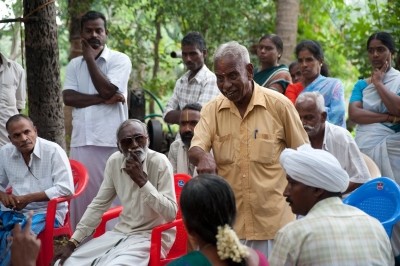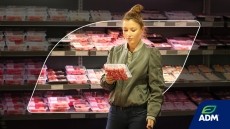Cattle consumption must be halved to hit EU climate targets

The study – led by Dr David Bryngelsson of Chalmers University of Technology, Sweden – suggests that halving the amount of beef and lamb we eat is “unavoidable” if EU 2050 climate change targets are to be met. The EU goal is to lower harmful methane and nitrous oxide emissions by almost 50% in 2050.
Yet, reducing food waste will have very little impact, the team said.
Based on six projected scenarios in the build up to 2050 with varying levels of meat consumption, Bryngelsson and team conclude that: “Deep cuts, by 50% or more, in ruminant meat (beef and mutton) consumption — relative baseline development — is the only dietary change that with high certainty is unavoidable if the EU climate targets are to be met.”
“In comparison with technological and dietary changes, reducing food waste plays a minor role for meeting the climate targets.”
Food labels could be one way to drive shoppers to make environmentally friendly choices, particularly if a single integrated label showing environmental bearing is introduced across a broad range of products, a second study notes.
EU climate change

The research follows a bundle of EU plans to cut food waste, including the European Commission’s Platform on Food Losses and Food Waste, which aims to halve retail and consumer food waste by 2030.
The EU-funded REFRESH project – set up to help tackle food waste – notes: “Together with moving to healthier diets reducing food waste both in and out of the home is the most significant demand-side measure for reducing the carbon impact of the food system.”
However, Bryngelsson and team argue that reducing food waste – even if “optimistic” goals to cut avoidable food waste in half are met – would only lower emissions by 1–3%.
Whereas livestock products (together with fish) are the most greenhouse gas intensive products, accounting for about 75% of all food-related emissions, with ruminant meat products the biggest source of emissions.
Differences in feed efficiency is a big reason ruminant meat emits bigger greenhouse gases, particularly for cattle bred for meat which eat environmentally-unfriendly cereals.
“In Europe, long winters necessitate substantial use of conserved feed (e.g. silage and grains), produced on arable land, in cattle production,” the team noted.
However: “Continued consumption at high per-capita levels of either non-ruminant meat (pork and poultry) or dairy products can be accommodated within the climate targets,” since both emit around 10 – 20 times less harmful gases than ruminant animals.
“European dairy production uses roughly three times more arable land per protein output than vegetable protein production. For a given arable land use, a structural shift in European production from beef to pork and/or poultry meat, or from dairy to vegetable food, could substantially increase—not decrease—the global supply of edible protein,” the team said.
Affecting change

The second study team – led by Allison Leach University of Virginia – proposed a range of calculation methods and four food label designs integrating carbon, nitrogen and water footprints for food products.
“Environmental impact food labels can help consumers compare across and within food product types and make more sustainable and environmentally-conscious decisions,” the team said.
However, the team stressed that the purpose of the study was not to identify the one best label, rather to provide options and to highlight the fact that labelling could have multiple environmental impacts.
“Regardless of the label selected, an environmental impact labelling strategy will be more effective if a single, integrated label is used across a broad range of food products and retailers,” the team said.
They were in agreeance with the first study that meat was the most damaging product to the environment.
“In most cases, the footprints were greatest for meat products,” they added. “Beef had the largest carbon, nitrogen, and water footprints per kg product while starchy roots had the smallest carbon footprint, oil had the smallest nitrogen footprint, and vegetables had the smallest water footprint.”
Source: Food Policy
Published online ahead of print doi 10.1016/j.foodpol.2015.12.012
“How can the EU climate targets be met? A combined analysis of technological and demand-side changes in food and agriculture”
Authors: David Bryngelsson, et al.
Published online ahead of print doi 10.1016/j.foodpol.2016.03.006
“Environmental impact food labels combining carbon, nitrogen, and water footprints”
Authors: Allison Leach, et al.




























